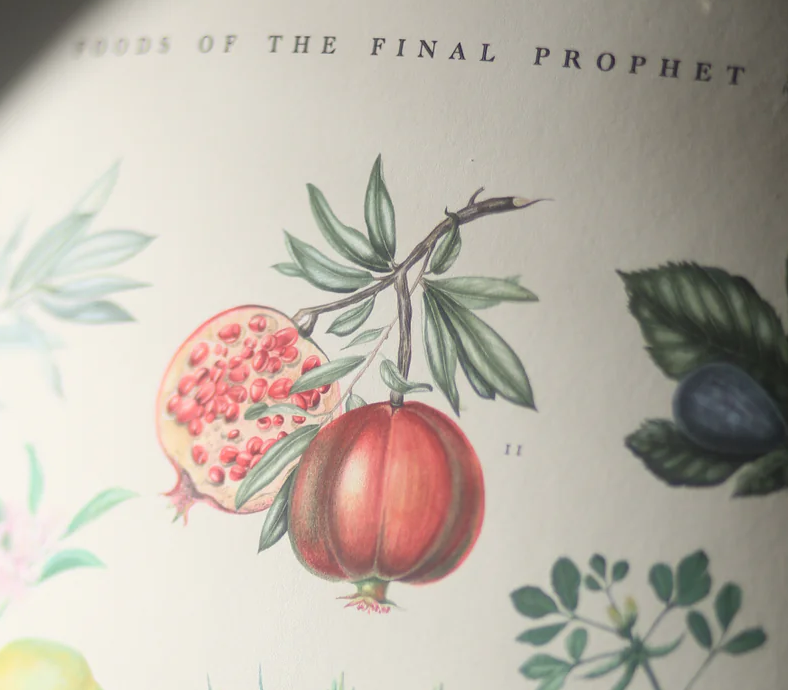
Nushmia Khan is a multifaceted artist and entrepreneur who has seamlessly blended her passion for Islamic heritage with her creative expertise. Founder of Silsila, a platform dedicated to preserving and promoting Islamic craftsmanship, Nushmia draws from her background in video journalism, photography, and design to create meaningful pieces that resonate with Muslims worldwide. Now based in Istanbul, she immerses herself in the study of traditional Islamic arts, infusing her work with a rich understanding of history and spirituality. In this interview, Nushmia shares her journey into Islamic arts, the story behind Silsila, and her aspirations for fostering a deeper connection to Islamic heritage through her creations.
Can you tell us about your journey into Islamic arts?
Art has always been a part of my family; many of my relatives are artistically inclined, and as Muslims, they naturally align their art with Islamic values. I’ve always had an interest in Islamic art, but it wasn’t until I studied abroad in Istanbul and began taking formal classes that I truly started to appreciate its depth and beauty.
What is the story behind the creation  of Nikah Nama and Silsila?
of Nikah Nama and Silsila?
I launched Silsila after spending years as a video journalist. During that time, I noticed a gap in the everyday items we use as Muslims—there was a need for meaningful, beautiful designs that enhance the practice of our faith. I started with wedding contracts that were not only aesthetically pleasing but also spiritually significant. Since then, I’ve expanded to create a variety of items, including birth certificates, shahada certificates, dastarkhans for eating on the floor, and protective Quran covers. Recently, I’ve been focusing on prayer rug designs.
How much research and effort go into creating your products?
It varies from product to product, but some of my designs have taken two to three years to bring to life. Each piece requires thoughtful research and meticulous effort to ensure it’s both beautiful and meaningful.
How did the idea for "Foods of the Final Prophet (SAW)" come about? What was your inspiration?
The inspiration for Foods of the Final Prophet (SAW) came from attending many Mawlid celebrations that featured tables filled with prophetic foods. I realized that I knew very little about these foods myself and thought, "What better way to teach families and children about them than through a decorative piece in the home?" I conducted extensive research and then commissioned each piece from a watercolor artist to bring the concept to life.
Could you elaborate on your other works related to Prophet Muhammad (SAW), such as the Hilya?
We offer a number of hilyas, which are beautifully ornamented descriptions of the Prophet (SAW). I discovered that many Western Muslims were unfamiliar with the concept of hilyas, so I wanted to create more awareness and appreciation for them. I’m also working on a lineage of the Prophet (SAW) as part of my collection.
Since you’re studying Islamic arts in Istanbul now, has it influenced your work?
Absolutely. Being in Istanbul has exposed me to an incredible variety of traditional arts that I hope to incorporate into my future work, inshaAllah. For instance, I’m currently taking tezhip (illumination) classes. Learning the science and precision behind tezhip has already begun to expand my ability to create even more intricate and beautiful nikah contracts.
 What are the long-term goals for Silsila and Nikah Nama, and are there any new ventures you’d like to explore?
What are the long-term goals for Silsila and Nikah Nama, and are there any new ventures you’d like to explore?
I recently completed my new book, A Children’s Study of Islamic Art, which introduces children to Islamic art in a fun and engaging way. I’m really excited to see how young readers will connect with it and incorporate Islamic art into their daily lives.
Could you elaborate a little?
The idea for the book came after I was asked to teach Islamic art to my son's kindergarten class, only to discover that there were very few resources available for teaching Islamic art to young children. Each chapter highlights a different form of Islamic art and follows a unique cat from a different region of the Muslim world, showcasing the diversity and richness of our global Muslim culture. The response so far has been overwhelmingly positive, and I look forward to sharing more about it soon, insha'Allah!
You have Instagram accounts for both Silsila and Nikah Nama. How do social media interactions influence your work?
Instagram has been an invaluable tool for sharing our work and connecting with like-minded individuals. On our Silsila account, people love getting a glimpse into daily life in Istanbul, which helps them connect to our brand on a deeper level. It’s also a great way to showcase how our products are used in real-life settings.
Thank you, Nushmia, for sharing your inspiring journey and the profound thought and effort you put into preserving and celebrating Islamic heritage through your art and entrepreneurship.